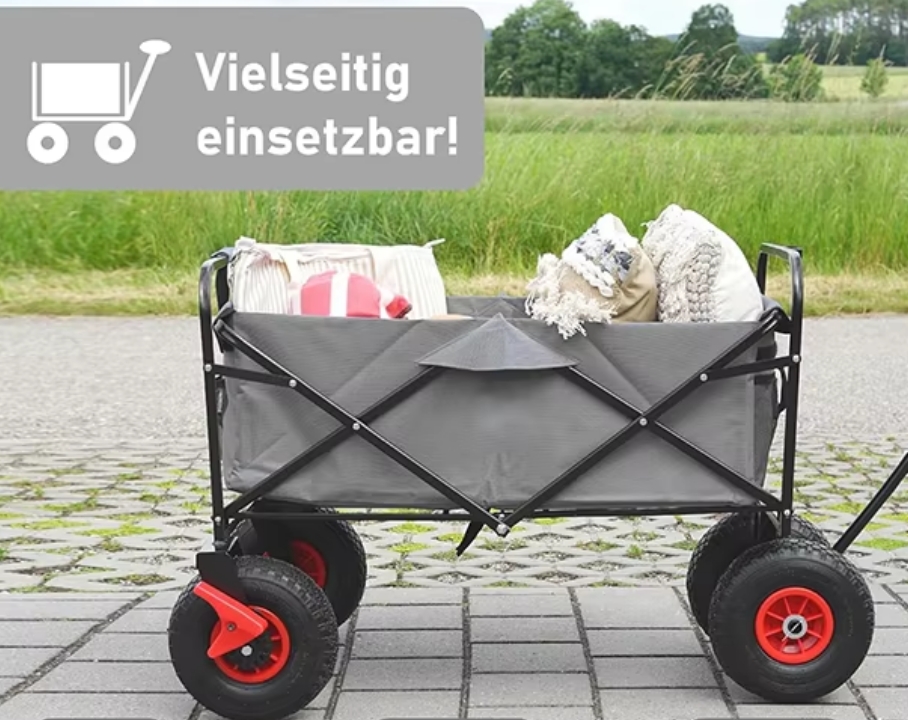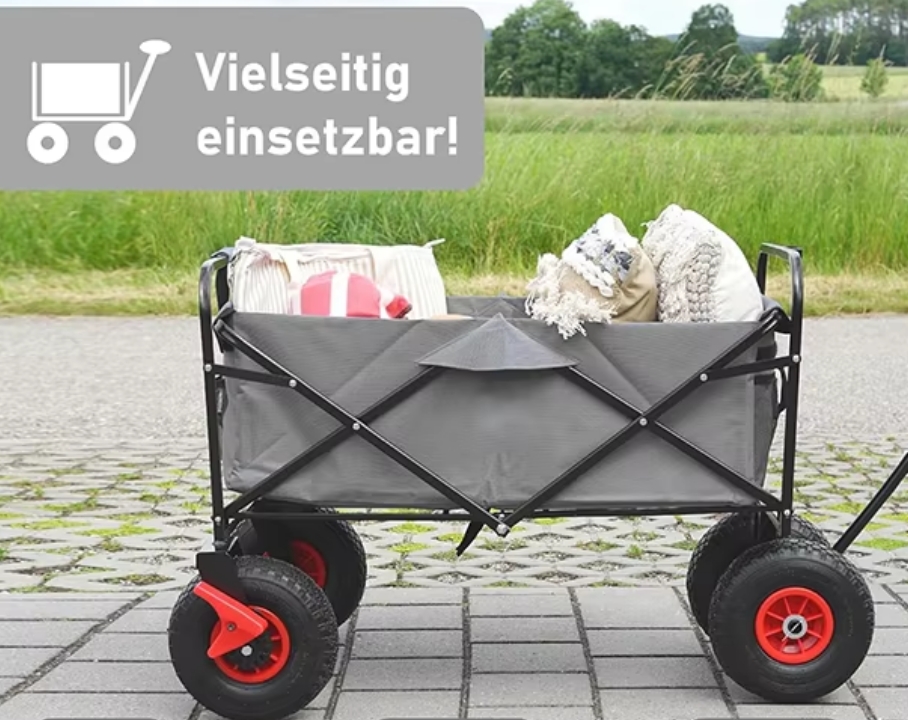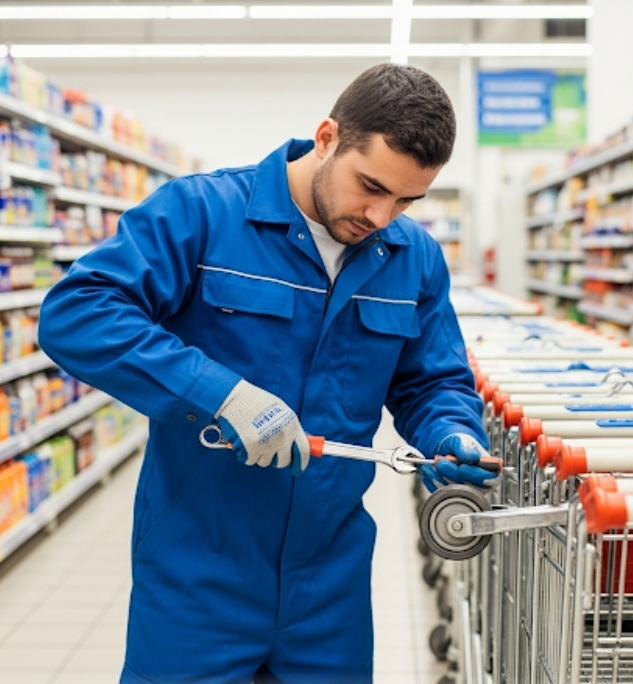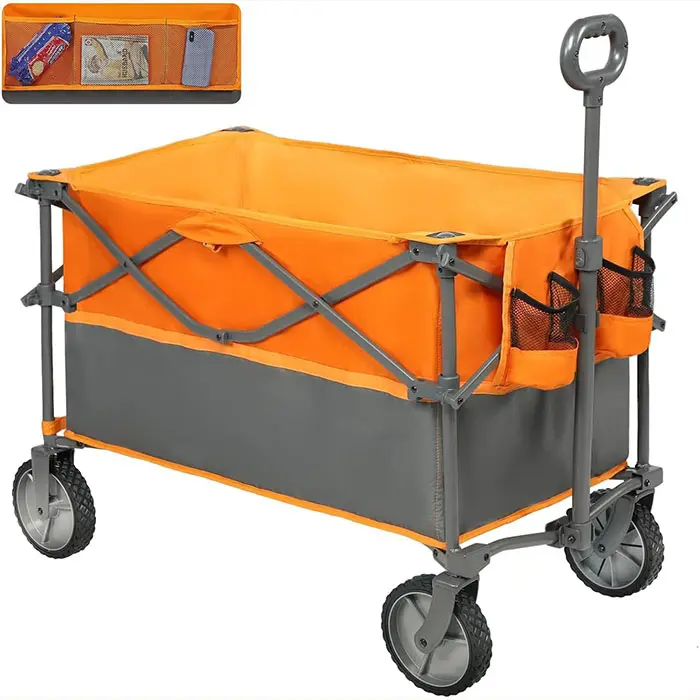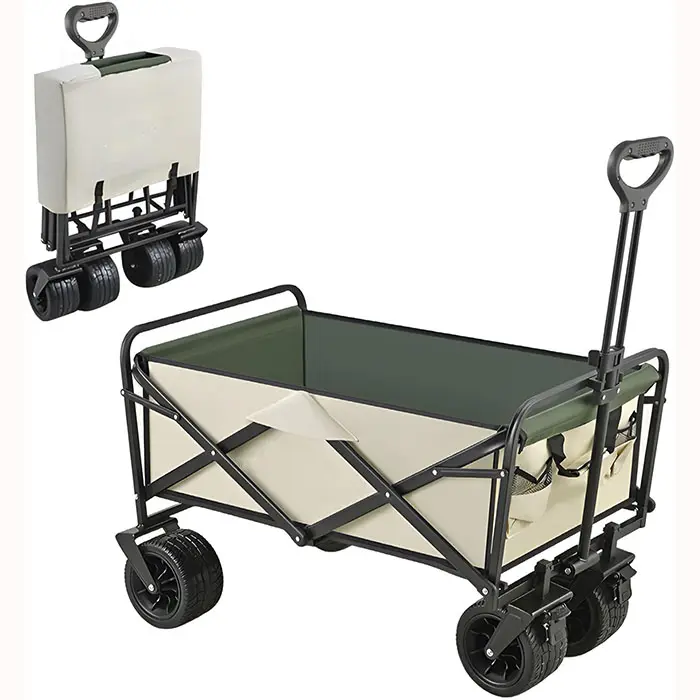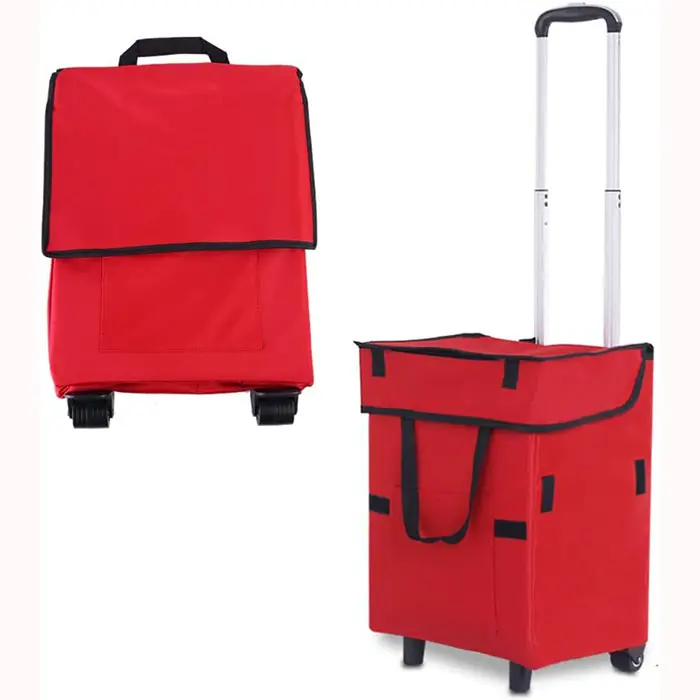As demands in outdoor leisure, retail, and logistics diversification, heavy-duty shopping trolleys are increasingly becoming a key focus for procurement managers and channel partners. In today's landscape of digital transformation and refined management within enterprise supply chains, procurement decision-makers face a critical choice between "foldable heavy-duty shopping trolleys" and "non-foldable heavy-duty shopping trolleys." How can businesses make a scientifically sound and efficient procurement decision, considering their differences in structural design, ease of use, durability, and commercial value?
This article deeply analyzes the core distinctions between these two types of trolleys, incorporating market data and application cases. Our goal is to help business clients accurately identify suitable scenarios for each product, optimize procurement strategies, and thereby effectively improve operational efficiency, reduce overall costs, enhance market competitiveness, and maximize procurement value.
I. Structural Design & Product Performance Differences: Balancing Load Capacity with Flexibility
1. Foldable Heavy-Duty Shopping Trolleys
Foldable trolleys typically feature high-strength alloy steel or carbon steel frames combined with precision hinges and folding mechanisms. This design ensures quick transitions between folded and unfolded states while maintaining structural stability. Modern designs prioritize folding convenience while also accommodating significant load capacities, commonly ranging from 100kg to 150kg, meeting medium to high-load demands. Their compact folded volume can save approximately 40%-60% of storage space, significantly reducing warehousing and transportation costs.
Innovative designs also include anti-pinch safety devices, silent wheels, and ergonomic handles, ensuring safe and comfortable operation to enhance the user experience. These are particularly suitable for scenarios with limited space and fluctuating operational needs.
2. Non-Foldable Heavy-Duty Shopping Trolleys
Non-foldable trolleys usually employ fully welded or high-strength integral steel frames, offering robust construction and superior load-bearing capabilities, often exceeding 200kg. This makes them ideal for heavy industry, warehousing, and logistics environments requiring high-intensity operations. Their design minimizes moving parts, leading to a lower mechanical failure rate and simpler maintenance. They exhibit excellent wear resistance and pressure resistance, ensuring long-term stable operation.
In industrial settings, the rigidity and heavier weight of non-foldable trolleys ensure their stability and durability. They are well-suited for fixed transport routes where frequent movement or folding is not required.
II. Ease of Use & Operational Efficiency: Comprehensive Performance Across Multiple Scenarios
Advantages of Foldable Trolleys
- Maximized Space Utilization: The foldable design greatly increases storage density, reducing site rental and inventory costs.
- Transportation Flexibility: Foldable trolleys are easy to load and unload quickly, improving delivery efficiency. They're ideal for urban express delivery, event venues, and rental services with multiple distribution points.
- Multi-functional Adaptability: The foldable design supports switching between various scenarios, meeting the rapid response needs of e-commerce, retail chains, and outdoor leisure sectors.
Advantages of Non-Foldable Trolleys
- Simple Operation, High Reliability: Simple structure requires no folding, reducing operational steps and human error.
- Low Maintenance, Sustained Efficiency: Low mechanical failure rate and infrequent maintenance ensure uninterrupted, high-intensity operations over the long term.
- High Load Applicability: Suitable for industrial environments, large warehouses, and fixed delivery routes, supporting high-frequency, large-volume operations.
According to our research, choosing the right trolley type for your business processes can boost employee productivity by 5%-15% and reduce operational risks caused by equipment mismatches.
III. Durability & Maintenance Costs: Key Factors for Long-Term Procurement Decisions
Due to their multiple moving joints and folding mechanisms, foldable trolleys, even when made with durable materials, might experience mechanical fatigue in hinges and connectors with frequent use. They require regular inspection and replacement, leading to relatively higher maintenance costs. To extend their lifespan, businesses should establish a regular maintenance plan, adjusting maintenance cycles based on actual usage frequency.
Non-foldable trolleys, with their stable structure and low failure rate, are ideal for businesses seeking "buy-and-use, long-term maintenance-free" solutions, particularly in industrial and warehousing sectors. They effectively reduce the risk of unexpected downtime and associated extra costs.
IV. Commercial Value & Market Procurement Considerations: Product Strategy from Data & Trends
1. Market Trends & Sales Analysis
Industry data indicates that over the past three years, the annual growth rate of procurement for foldable heavy-duty shopping trolleys has reached 18%, with significant demand in emerging markets like cross-border e-commerce, event rentals, and community delivery. Due to their convenience and flexibility, foldable trolleys boast a 15%-25% higher repurchase rate than non-foldable ones, and channel partners report them as a key driver of sales growth.
Non-foldable trolleys remain the mainstream choice for traditional industrial clients and bulk procurement. They offer excellent durability and low failure rates, ensuring stable and rigid market demand. Most enterprises tend to procure standardized non-foldable trolleys at scale, using them as core logistics equipment.
2. Enterprise Procurement Strategy Recommendations
- For Businesses with Multi-Scenario Flexible Applications (e.g., Retail Chains, Express Logistics, Outdoor Event Services): Prioritize foldable heavy-duty shopping trolleys to support multi-point deployment and space optimization, enhancing operational flexibility.
- For Businesses with High-Load Fixed Operations (e.g., Manufacturing Plants, Warehousing Logistics Centers): Opt for non-foldable trolleys to ensure stable, high-intensity continuous operations and reduce the maintenance burden.
- Mixed-Use Strategy: Some enterprises adopt a combination of both types, configuring them as needed to maximize performance for different business lines and achieve optimal resource allocation.
V. Future Trends: Smart & Eco-Friendly Innovations Driving Product Upgrades
With the rise of smart logistics and green manufacturing concepts, technological upgrades for heavy-duty shopping trolleys are a growing trend. Foldable trolleys are integrating smart monitoring, load sensing, and positioning functions to improve operational visibility and equipment management efficiency. Non-foldable trolleys are also advancing in the application of lightweight materials, reducing self-weight while maintaining strength, helping enterprises lower energy consumption and carbon footprints.
Procurement teams should focus on suppliers' innovation capabilities and service systems, choosing partners who offer technological iteration and full lifecycle support to ensure the sustained value of their procurement investments.
VI. Conclusion & Action Recommendations
Both foldable and non-foldable heavy-duty shopping trolleys have distinct advantages and limitations. When procuring, enterprises should conduct a comprehensive evaluation based on their business scenarios, operational intensity, space conditions, and maintenance capabilities to make a scientifically informed choice. By combining operational data with market trends to formulate a rational procurement mix strategy, your business can achieve:
- Significantly improved storage and transportation efficiency.
- Reduced equipment maintenance and operational costs.
- Enhanced employee operational experience and customer satisfaction.
- Stronger market adaptability and competitive advantage.
We recommend that enterprise procurement managers establish dynamic procurement standards, integrating product performance, market feedback, and supply chain support. This approach will drive the deep integration of heavy-duty shopping trolleys with your company's digital transformation and green development strategies, ensuring equipment procurement becomes a core asset driving long-term sustainable growth.
About Us: Your Partner in Shopping Trolley Manufacturing
Our factory, founded in 2015, boasts nearly a decade of expertise in the bag and trolley manufacturing industry. Located in Quanzhou, China, we operate advanced production lines with a monthly output of over 50,000 units. We're dedicated to supplying the UK and global markets with high-quality, customizable, and certified shopping trolley solutions.
